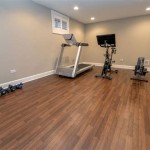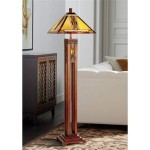Outdoor Wood Flooring Over Concrete: A Comprehensive Guide
Concrete patios, balconies, and decks offer a durable and often pre-existing base for outdoor living spaces. However, concrete’s inherent aesthetic limitations and potential for heat absorption can make it less desirable for prolonged use. Installing wood flooring over concrete presents an effective solution, combining the structural integrity of concrete with the natural beauty and comfort of wood. This article explores the various aspects of implementing outdoor wood flooring over concrete, focusing on key considerations, installation methods, and maintenance strategies.
Assessing Concrete Suitability and Preparing the Surface
Prior to installing any type of wood flooring, a thorough assessment of the existing concrete surface is crucial. Several factors determine the concrete's suitability, including its structural integrity, levelness, and moisture content. Cracks, excessive pitting, or significant unevenness necessitate repairs before proceeding. Major structural deficiencies may require professional intervention to ensure a stable foundation for the wood flooring.
A visual inspection should identify any cracks or damage. Small cracks can often be filled with concrete patching compounds designed for outdoor use. Larger cracks, particularly those indicating structural movement, necessitate more comprehensive repairs, potentially involving crack injection or concrete resurfacing. Pitting or surface imperfections can be addressed using self-leveling concrete overlays.
Levelness is another critical consideration. Significant slopes or undulations will create uneven support for the wood flooring, leading to instability and potential damage over time. A long level or laser level can be used to identify areas requiring leveling. Self-leveling concrete compounds are commonly employed to create a uniformly flat surface. The manufacturer's instructions must be strictly followed regarding mixing ratios, application thickness, and curing times.
Moisture content is perhaps the most critical factor. Concrete is porous and can absorb moisture from the ground, rain, or humidity. Excessive moisture trapped beneath the wood flooring can lead to rot, mold growth, and warping. A moisture test is essential to determine the concrete’s moisture content. Calcium chloride tests, relative humidity probes, and electronic moisture meters are commonly used methods. The acceptable moisture level will depend on the type of wood flooring being installed and the manufacturer's recommendations.
If the concrete exhibits high moisture levels, several remedial actions can be taken. A waterproof membrane can be applied to the concrete surface to create a moisture barrier. This membrane must be compatible with the chosen adhesive or fastening system for the wood flooring. Proper drainage around the concrete slab is also essential to minimize moisture penetration. This may involve grading the surrounding landscape to direct water away from the foundation or installing subsurface drainage systems.
Once the concrete is deemed structurally sound, level, and moisture-resistant, it must be thoroughly cleaned. Remove any dirt, debris, oil stains, or existing coatings. Pressure washing is an effective method for cleaning concrete surfaces. Stubborn stains may require the use of specialized concrete cleaners. After cleaning, allow the concrete to dry completely before proceeding with the installation.
Selecting Appropriate Wood Flooring Materials
The selection of wood flooring materials is paramount, as the outdoor environment presents unique challenges compared to indoor applications. Factors such as moisture exposure, temperature fluctuations, and UV radiation must be considered when choosing the type of wood and its treatment.
Naturally durable wood species are highly recommended for outdoor use. These species possess inherent resistance to decay, insects, and moisture. Popular choices include redwood, cedar, teak, and Ipe. These woods contain natural oils and compounds that protect them from the elements. While these species often come at a higher price point, their longevity and reduced maintenance requirements justify the investment.
Alternatively, pressure-treated lumber offers a more economical option. Pressure treatment involves impregnating wood with chemical preservatives that protect it from decay and insect infestation. However, it is crucial to select pressure-treated lumber specifically designed for outdoor ground contact applications. The treatment process should conform to industry standards and regulations to ensure its effectiveness and environmental safety.
Composite decking, made from a combination of wood fibers and recycled plastic, presents another viable alternative. Composite decking offers several advantages over natural wood, including resistance to rot, splintering, and insect damage. It also requires minimal maintenance and is available in a wide range of colors and textures. However, composite decking may not have the same natural aesthetic appeal as real wood and can be more susceptible to fading over time.
Regardless of the wood material chosen, proper sealing and finishing are essential. A high-quality exterior-grade sealant should be applied to all surfaces of the wood, including the edges and undersides. This sealant will help to repel water and protect the wood from UV radiation. Regular reapplication of the sealant is necessary to maintain its effectiveness. The frequency of reapplication will depend on the severity of the weather conditions and the type of sealant used.
For added protection, a UV-resistant finish can be applied over the sealant. This finish will help to prevent the wood from fading and discoloration due to prolonged sun exposure. Choose a finish specifically designed for outdoor use and follow the manufacturer's instructions for application. Regular cleaning and maintenance are crucial to preserving the appearance and longevity of the wood flooring. Remove any debris, leaves, or standing water promptly. Periodically clean the flooring with a mild soap and water solution.
Installation Methods and Best Practices
Several installation methods can be employed for laying outdoor wood flooring over concrete, each with its own advantages and disadvantages. The choice of method will depend on factors such as the type of wood flooring, the size and shape of the area, and the desired level of permanence.
One common method involves constructing a sleeper system. Sleepers are typically pressure-treated lumber strips laid directly on the concrete surface. These sleepers provide a raised platform for attaching the wood flooring, allowing for air circulation and drainage beneath the flooring. The sleepers should be spaced evenly and securely fastened to the concrete using concrete anchors or adhesive. Ensure that the sleepers are level and aligned to provide a stable and even surface for the wood flooring.
The wood flooring is then attached to the sleepers using screws or nails. Stainless steel fasteners are recommended to prevent corrosion. Leave small gaps between the boards to allow for expansion and contraction due to temperature and humidity changes. These gaps will prevent the flooring from buckling or warping. The width of the gaps will depend on the type of wood and the local climate conditions. Consult with a flooring professional or the manufacturer's recommendations for specific guidance.
Another method involves using interlocking deck tiles. These tiles are typically made from wood, composite, or plastic and feature a built-in interlocking system that allows them to be easily connected. Deck tiles offer a quick and easy installation option, requiring minimal tools or expertise. They are also easily removable, making them ideal for temporary or semi-permanent installations. Deck tiles can be laid directly on the concrete surface, although a level surface is still necessary. Ensure that the tiles are properly aligned and secured to prevent movement. Some deck tiles feature a raised base that allows for drainage beneath the flooring.
Direct adhesion is another option, although it is generally not recommended for outdoor wood flooring due to the potential for moisture damage. Direct adhesion involves gluing the wood flooring directly to the concrete surface. This method requires a very smooth and level concrete surface and a high-quality adhesive specifically designed for outdoor use. It is also crucial to ensure that the concrete is completely dry before applying the adhesive. Moisture trapped beneath the flooring can lead to adhesive failure, rot, and mold growth.
Regardless of the installation method chosen, proper drainage is essential. Ensure that the area is adequately sloped to allow water to flow away from the flooring. Consider installing drainage channels or French drains to collect and divert water away from the foundation. Regular maintenance is crucial to prevent debris from clogging the drainage channels and impeding water flow.
Furthermore, consider the orientation of the wood flooring in relation to the prevailing weather patterns. Orienting the boards perpendicular to the direction of prevailing winds and rain can help to minimize water penetration and promote faster drying. This can help to extend the lifespan of the flooring and reduce the risk of moisture damage.
Finally, always consult with a qualified contractor or flooring professional before undertaking any outdoor wood flooring project. They can provide valuable advice and guidance on selecting the appropriate materials, installation methods, and maintenance strategies for your specific needs and circumstances.

How To Lay Deck Flooring On A Concrete Patio The Home

How To Lay Deck Flooring On A Concrete Patio The Home

Transform Your Concrete Patio With These Amazing Ideas

13 Great Diy Outdoor Patio Flooring Ideas On A Budget Tiles Deck Over Concrete

Outdoor Tile Woodstone Sleepers Marshalls Plc For Floor Wooden Concrete

14 Outdoor Flooring Options Ultimate Guide

What Is The Best Patio Flooring Over Concrete Options

Waterproof Plastic Wood Composite Flooring Outdoor Interlocking Patio Deck For Backyard Tiles On Dirt And Concrete Wpc Diy Decking Made In Com

Perforated Interlocking Patio Tiles Over Concrete Made In Usa

Concrete Patio Transformation 7 Steps To Diy A New Outdoor Oasis








